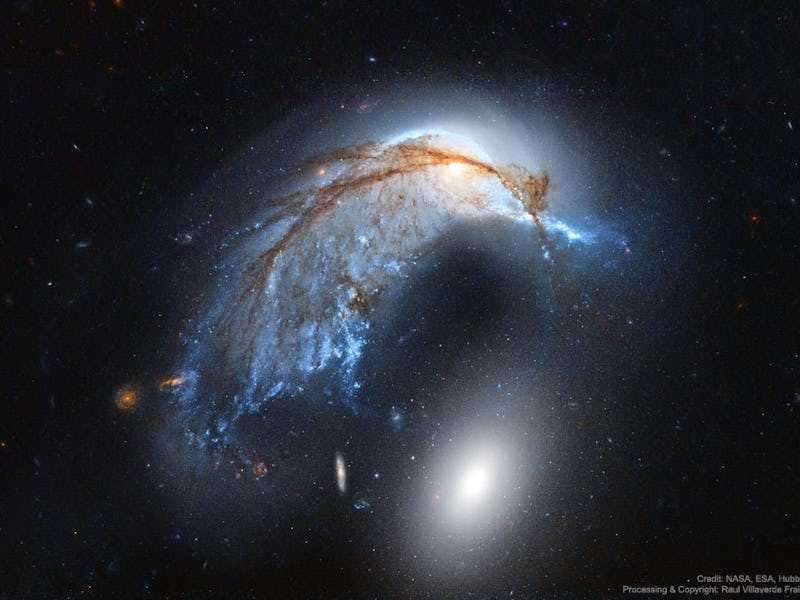
Far away in the Hydra constellation lives a penguin guarding his egg. Or maybe it’s a porpoise? In this image, taken by NASA’s Hubble Space Telescope, you can see how the (once) spiral galaxy, NGC 2936, is being twisted and manipulated into a strange animalistic formation by the gravitational force of elliptical galaxy NGC 2937. The constant stress has stretched NGC 2936, also known as the Porpoise Galaxy, so that the center of it looks like a bright eye and the tails spin out into a belly and a beak, like a penguin. Others think it also looks like a porpoise because of the young stars forming a nose-like pattern.
NGC 2936 (above) and NGC 2937 (below) look a lot like a penguin and his egg.
Putting the porpoise or penguin debate aside, what is happening here is truly a battle of forces. Unlike the plethora of new stars still forming in NGC 2936, NGC 2937 has very little star activity and mostly just consists of old stardust. It’s an aging elliptical grandpa, perhaps on a mission to regain its youth by absorbing the younger activity.
So, while the duo may seem cute and protective, it’s actually highly destructive. The magnetic pull is slowly bringing them closer and closer together until one day they will be merged into one, but that’s about a billion years from now.
Getting a little ahead of themselves, scientists already named the pair as one, calling it ARP 142. Other galactic mergers often become extremely large and volatile objects, sweeping up everything in their path. But, we won’t have to worry about ARP 142 coming for us, because it lives about 300 million light-years away.